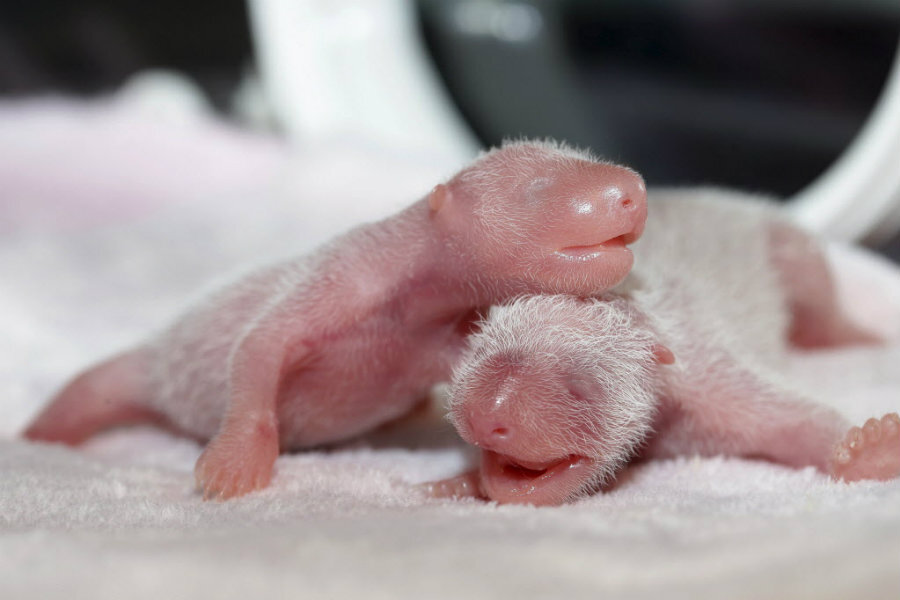Panda gives birth to twin cubs. Are captive breeding programs worth it?
Loading...
Happy news for panda lovers: On Monday, 7-year-old Kelin became mother to twin female cubs at a breeding center in Chengdu, in southwest China.
The pair are the first twin pandas born in China this year and are reported to be in good health: the larger weighed 4.1 ounces, while the smaller weighed 2.5 ounces, according to NBC News. The pregnancy, a result of artificial insemination, was also a first for Kelin, who for a time refused to mate, and then had trouble getting pregnant, China Daily reported.
Joyful as it is, the event highlights the difficulties of breeding giant pandas in captivity – an effort that some conservationists criticize as costly, and one that does little to address human impact on the panda population. Others tout the endeavor as critical to sustaining the endangered species, of which there are fewer than 1,900 alive in the wild.
“Everyone is enormously excited about baby pandas because they are undeniably attractive,” Stuart Pimm, a professor of conservation ecology at Duke University, told National Geographic. “So by having pandas in zoos it really engages people – it really is about getting people to care, and that's important.”
In some ways, the effort is successful. A partnership between the Chinese government and the WWF, an international conservation group, has resulted in nearly 70 panda reserves where people can visit protected areas, learn about pandas, and see them in captivity. Through this partnership and similar efforts elsewhere, about about 300 giant pandas, the minimum required to sustain a species, live in zoos and breeding centers around the world today.
Breeding programs, however, come with a host of challenges.
“I love pandas and I wish that they were in a better state in the wild,” Mark Bekoff, an ethologist at University of Colorado, Boulder, told National Geographic. “[B]ut I’m just not convinced that these [captive breeding] programs work out well in terms of getting pandas out there.”
For one thing, as Kelin demonstrated, getting pandas pregnant is no easy task. A female panda is only fertile for a few days every year, and even if she is induced to mate, there’s no guarantee that she will get pregnant, according to the Colorado-based non-profit Pandas International. The same is true for artificial insemination, though scientists have refined the process to make it relatively non-invasive and carefully timed.
Captive breeding programs are also expensive. Hosting giant pandas can cost a zoo an average of $2.6 million a year, National Geographic reported in 2006. Add a baby and the figure shoots up to above $3 million; make it two and the amount approaches $4 million.
In addition, captive breeding programs have an unimpressive track record at preparing pandas to survive in the wild. In one of two cases in which scientists reintroduced a captive panda into its natural habitat, the panda lived less than a year despite training three years to live outside of captivity.
A solution may lie in programs that focus on increasing panda numbers as well as addressing infrastructure development, ecotourism, and other human activities that continue to destroy panda habitats that are essential to restoring the species population, wildlife biologist Wang Dejan wrote for The Guardian.
The partnership between China and the WWF, for instance, works to protect and expand the panda’s natural mountain home by developing bamboo corridors to link isolated pockets of forest, helping wild pandas find more food and breeding mates.
“Captive breeding may have proved successful, but it's no substitute for protecting wild populations and their habitats,” Mr. Dejan noted. “Conservation and restoration of those wild forest ecosystems is the key to panda protection.”








